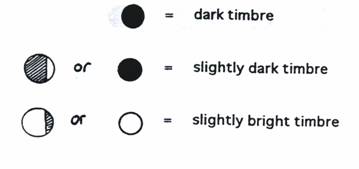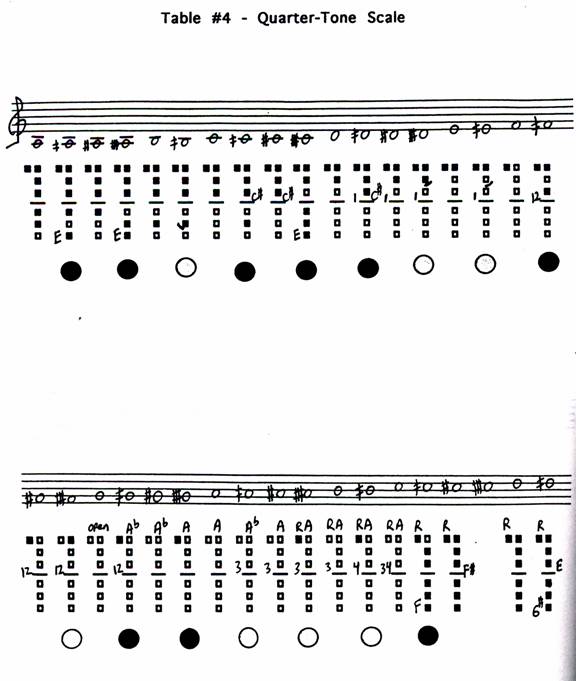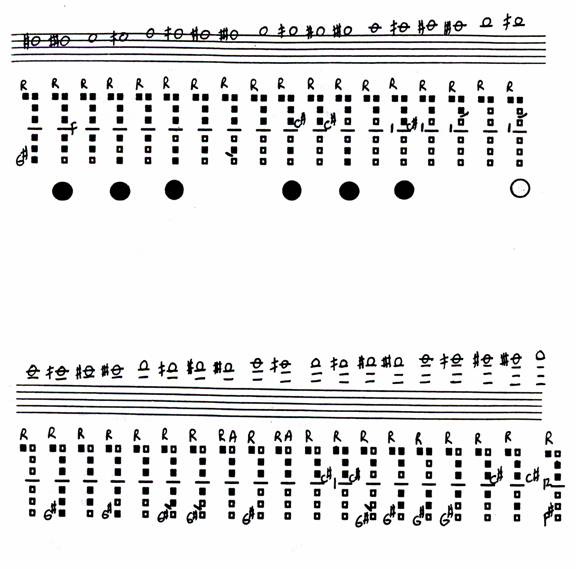| The Clarinet of the Twenty-First Century - E. Michael Richards |
CHAPTER 7 - E-flat Clarinet
Quarter-Tones
The quarter-tone is a logical rather than acoustic extension of the chromatic scale. In the practice and theory of a variety of Asian musics, for example, where microtonal intervals are employed, exact quarter-tones do not exist. The following chart attempts to represent equally tempered quarter-tones, but may certainly be modified to create a variety of proportions.
Unless there are reasons of desired voice leading, adherence to either sharps or flats within a work will make visual and technical recognition easier for the performer (the quarter tone scale here is presented in sharps only). It is generally good practice to specify fingerings directly under the quarter-tones that appear in the piece, as opposed to merely a list at the beginning of the work. It is not necessary to repeat this fingering diagram every time a particular quarter-tone occurs. Since all fingerings may not produce an identical pitch or timbre for every performer, it is helpful if the composer can briefly describe his intentions in a preface. For example, is he more interested in a dark timbre than a precisely pitched quarter-tone? This will help the performer to make an educated fingering choice, if it is necessary to change the given fingering because of inherent characteristics of individual instruments and E-flat clarinetists.
The following quarter-tone scale extends from A3 (written pitch) to G-sharp 6; it contains relatively few problems for the E-flat clarinetist. However, somewhat weak conjunct sections of the quarter-tone scale are found across the "break" from the throat register to the clarion register (A-sharp 4 to D4). From C4 to D4 there are no practical fingerings for quarter-tones, since virtually the entire length of the instrument is employed. Cross fingerings can not be utilized. This is the same consideration that inhibits quarter-tone production below chalumeau A. Another section of the quarter-tone scale that is weak consists of pitches above F-sharp 6. The altered air and embouchure pressure necessary to produce these pitches (often on different partials), as well as awkward fingerings make them treacherous, especially if approached quickly by leap or attacked without preparation.
Several notations appear below some of the quarter-tones in the chart. Timbre indications are given if a quarter-tone differs significantly from the timbres of notes around it (i.e. a dark timbre in the lowest register is relatively different from a dark timbre in the clarion register). It was not possible to find equal-tempered quarter-tones for all intervals - thus, some are marked as sh (slightly high) or sl (slightly low). DAT refers to pitches that are difficult to attack strongly.

(click on line for mp3)

|
||
